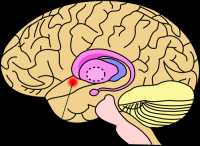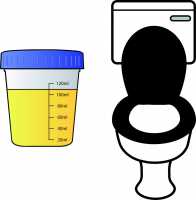Omega-3 Fatty Acids Linked to Improved Outcomes after Heart Attack
BrainHQ Training Plus Exercise Improved Cognition and Self-Care Capacity in Heart Failure Patients
 Dr. Mahncke earned his PhD at UCSF in the lab where lifelong brain plasticity was discovered. At the request of his academic mentor, he currently leads a global team of more than 400 brain scientists engaged in designing, testing, refining, and validating the computerized brain exercises found in the BrainHQ app from Posit Science, where he serves as CEO.
MedicalResearch.com Tell us what’s important about this new study in people with heart failure?
Response: Heart failure is a common condition that even when properly treated can have adverse long-term health outcomes and high medical costs. Heart failure commonly causes cognitive impairment, which can have devastating effect on patient abilities to engage in self-care, and which contributes to poor clinical outcomes, increased rehospitalizations, and higher mortality rates. What makes these results exciting is that the Emory University researchers discovered that a simple intervention – a fairly modest amount of walking and brain exercise – not only significantly improved a standard measure of cognition, but also significantly improved multiple measures that drive better health outcomes and lower costs.
MedicalResearch.com: What is heart failure?
Response: Heart failure – sometimes called congestive heart failure or congestive cardiac failure – is when the heart cannot pump sufficient blood flow to maintain the body’s needs. Common symptoms include excessive tiredness, shortness of breath and swelling particularly in legs. It’s treated with a combination of lifestyle changes, drugs, and devices. An estimated 6.5 million Americans are diagnosed with heart failure, with 960,000 new cases each year, leading some to describe it as reaching epidemic proportions. In older adults, it’s the most common cause of hospital readmissions within 30 days of discharge and among the most costly areas of Medicare expenditures.
(more…)
Dr. Mahncke earned his PhD at UCSF in the lab where lifelong brain plasticity was discovered. At the request of his academic mentor, he currently leads a global team of more than 400 brain scientists engaged in designing, testing, refining, and validating the computerized brain exercises found in the BrainHQ app from Posit Science, where he serves as CEO.
MedicalResearch.com Tell us what’s important about this new study in people with heart failure?
Response: Heart failure is a common condition that even when properly treated can have adverse long-term health outcomes and high medical costs. Heart failure commonly causes cognitive impairment, which can have devastating effect on patient abilities to engage in self-care, and which contributes to poor clinical outcomes, increased rehospitalizations, and higher mortality rates. What makes these results exciting is that the Emory University researchers discovered that a simple intervention – a fairly modest amount of walking and brain exercise – not only significantly improved a standard measure of cognition, but also significantly improved multiple measures that drive better health outcomes and lower costs.
MedicalResearch.com: What is heart failure?
Response: Heart failure – sometimes called congestive heart failure or congestive cardiac failure – is when the heart cannot pump sufficient blood flow to maintain the body’s needs. Common symptoms include excessive tiredness, shortness of breath and swelling particularly in legs. It’s treated with a combination of lifestyle changes, drugs, and devices. An estimated 6.5 million Americans are diagnosed with heart failure, with 960,000 new cases each year, leading some to describe it as reaching epidemic proportions. In older adults, it’s the most common cause of hospital readmissions within 30 days of discharge and among the most costly areas of Medicare expenditures.
(more…)Kid Influencers Generate Enormous Views for Unhealthy Food Products
For Better or Worse, Most Couples Share Lifestyle Risk Factors
Aspirin Linked to Improved Outcomes in Hospitalized COVID-19 Patients
Ketamine Reverses Amblyopia – Lazy Eye – By Restoring Brain Plasticity
Telemedicine Improves Emergency Room Efficiency
Microplastics Released in Baby Bottles During Formula Preparation
 MedicalResearch.com: What is the background for this study?
Response: There is growing evidence to suggest that micro and nano plastics are released into our food and water sources through the chemical and physical degradation of larger plastic items. Some studies have demonstrated the potential transfer of micro and nano plastics from oceans to humans via the food chain but little is known about the direct release of microplastics (MPs) from plastic products through everyday use – and this is what we wanted to investigate.
Polypropylene (PP) is one of the most commonly produced plastics in the world for food preparation and storage. It is used to make everyday items such as lunch boxes, kettles and infant-feeding bottles (IFBs). Despite its widespread use the capacity of PP to release microplastics was not appreciated until now.
We analysed the potential for release of MPs from polypropylene infant-feeding bottles (PP-IFBs) during formula preparation by following international guidelines. We also estimated the exposure of 12-month-old infants to MPs in 48 countries and regions. (more…)
MedicalResearch.com: What is the background for this study?
Response: There is growing evidence to suggest that micro and nano plastics are released into our food and water sources through the chemical and physical degradation of larger plastic items. Some studies have demonstrated the potential transfer of micro and nano plastics from oceans to humans via the food chain but little is known about the direct release of microplastics (MPs) from plastic products through everyday use – and this is what we wanted to investigate.
Polypropylene (PP) is one of the most commonly produced plastics in the world for food preparation and storage. It is used to make everyday items such as lunch boxes, kettles and infant-feeding bottles (IFBs). Despite its widespread use the capacity of PP to release microplastics was not appreciated until now.
We analysed the potential for release of MPs from polypropylene infant-feeding bottles (PP-IFBs) during formula preparation by following international guidelines. We also estimated the exposure of 12-month-old infants to MPs in 48 countries and regions. (more…)Periodontal Disease Has Systemic Effects Beyond Oral Disease
Oral and Inhaled Corticosteroids For Asthma Linked to Increased Risk of Osteoporosis
Psychiatric Subtypes Identified by AI-Enhanced EEGs
 Response: Cohen Veterans Bioscience (CVB) is a non-profit 501(c)(3) research biotech dedicated to fast-tracking the development of diagnostic tests and personalized therapeutics for the millions of Veterans and civilians who suffer the devastating effects of trauma-related and other brain disorders.
To learn about CVB’s research efforts visit www.cohenveteransbioscience.org.
MedicalResearch.com: How can patients with PTSD or MDD benefit from this information?
Response: With the discovery of this new brain imaging biomarker, patients who suffer from PTSD or MDD may be guided towards the most effective treatment without waiting months and months to find a treatment that may work for them.
MedicalResearch.com: What is the background for this study?
Response: This study, which was supported with a grant from Cohen Veterans Bioscience, grants from the National Institute of Mental Health (NIMH and other supporters, derives from our work over the past few years which has pointed to the critical importance of understanding how patients with a variety of psychiatric disorders differ biologically. The shortcomings of our current diagnostic system have become very clear over the past 1-2 decades, but the availability of tools for transcending these limitations on the back of objective biological tests has not kept pace with the need for those tools.
In prior work, we have used a variety of methods, including different types of brain imaging, to identify brain signals that underpin key biological differences within and across traditional psychiatric diagnoses. We have also developed specialized AI tools for decoding complex patterns of brain activity in order to understand and quantify biological heterogeneity in individual patients. These developments have then, in turn, converged with the completion of a number of large brain imaging-coupled clinical trials, which have provided a scale of these types of data not previously available in the field.
(more…)
Response: Cohen Veterans Bioscience (CVB) is a non-profit 501(c)(3) research biotech dedicated to fast-tracking the development of diagnostic tests and personalized therapeutics for the millions of Veterans and civilians who suffer the devastating effects of trauma-related and other brain disorders.
To learn about CVB’s research efforts visit www.cohenveteransbioscience.org.
MedicalResearch.com: How can patients with PTSD or MDD benefit from this information?
Response: With the discovery of this new brain imaging biomarker, patients who suffer from PTSD or MDD may be guided towards the most effective treatment without waiting months and months to find a treatment that may work for them.
MedicalResearch.com: What is the background for this study?
Response: This study, which was supported with a grant from Cohen Veterans Bioscience, grants from the National Institute of Mental Health (NIMH and other supporters, derives from our work over the past few years which has pointed to the critical importance of understanding how patients with a variety of psychiatric disorders differ biologically. The shortcomings of our current diagnostic system have become very clear over the past 1-2 decades, but the availability of tools for transcending these limitations on the back of objective biological tests has not kept pace with the need for those tools.
In prior work, we have used a variety of methods, including different types of brain imaging, to identify brain signals that underpin key biological differences within and across traditional psychiatric diagnoses. We have also developed specialized AI tools for decoding complex patterns of brain activity in order to understand and quantify biological heterogeneity in individual patients. These developments have then, in turn, converged with the completion of a number of large brain imaging-coupled clinical trials, which have provided a scale of these types of data not previously available in the field.
(more…)CBG vs CBD: What Are the Differences?
While CBD and CBG are both cannabinoids by nature, they do come from different parts of the cannabis plant, which...
COVID-19: Targeted Anti-Inflammatory Tocilizumab Reduced Mortality in Critically Ill Patients
Surveillance for Human Prion Disease
Simple Mouthwashes May Inactivate Coronaviruses
Public’s Willingness to Get Vaccinated: Do Politics Matter?
Does Changing Zip Codes Change Your Risk of Chronic Health Conditions?
Time for a Change in Endoscopic Modality of GI Cancer Screening
Which Income Group Linked to More E-Cigarette Purchases?
Who Takes COVID-19 Health Problems More Seriously? Men or Women?
SARS-CoV-2 Can Remain Viable on Surfaces Longer Than Originally Thought
Re-evaluation of Race Multiplier in Estimating Kidney Disease
The original CKD-EPI and MDRD studies showed an association between African-American race with higher measured GFR at the same blood creatinine concentration. However, there have been concerns raised about the application of the race multiplier to all African-American patients. First, there is no clear biological explanation for the association, the identification of Black race was unclear in some of the cohorts used in these studies, and there is vast genetic and ancestral heterogeneity among those who self-identify as black. The use of the race multiplier also ignores the fact that race is a social, not biological construct.
We found that with the removal of the race multiplier, up to one in every three African-American patients would be reclassified as having a more severe stage of CKD, with one-quarter of African-American patients going from stage 3 to stage 4. We also found that with the removal of the race multiplier, 64 patients would have had an eGFR <20, the threshold for referral for kidney transplant, and none of these patients were referred, evaluated or waitlisted for transplant. This is in contrast, to those African-American patients with an eGFR <20 with the race multiplier applied, who had a higher odds of being referred, evaluated or waitlisted for transplant compared to other racial groups (Odds ratio of 2.28, compared to White cohort).
(more…)Surgical Procedures That Generate Aerosols Requiring Enhanced PPE


MRI Detects Brain Structure Linked to Increased Weight Gain in Children
Pandemic Anxiety May Be Causing Teeth Grinding Rates To Increase
Around 8% of the population in America experiences sleep bruxism - a disorder characterized by teeth grinding and jaw clenching that leads to headaches, the wearing 

Why Is Bruxism On The Rise?
It is a stressful time in many ways, and this increases the likelihood of teeth grinding and jaw clenching at night. A study published in the journal Head & Face Medicine showed that nightly gnashing of teeth was especially prevalent among those who tried to cope with stress by escaping from difficult situations. Bruxism can lead to everything from tooth sensitivity to pain in the muscles of the jaw responsible for chewing. While there are many exercises to soothe tight jaw muscles, this is just one approach that should be considered. Because bruxism can actually lead to tooth loss, it should be taken seriously, and if stress is the cause, then this separate issue should also be tackled proactively.























